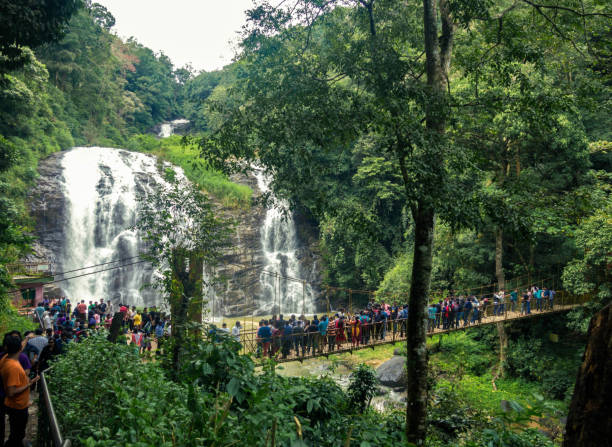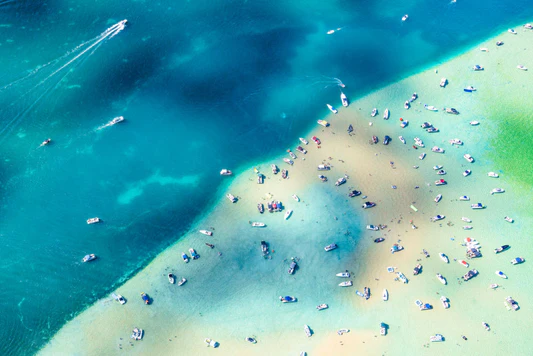About Nuwara Eliya, Sri Lanka
Nuwara Eliya is a picturesque hill station in Sri Lanka, known for its vibrant and travel friendly cool climate, lush green tea plantations and colonial bungalows. Often known as “Little England”, originally Nuwara Eliya built for the purpose of retreat for British colonial officials during the 19th century. Today where visitors will spot some of the British influenced hotels, architectures, gardens and villages.
Nuwara Eliya is filled with the most beautiful landscapes, vast tea estates, rich colonial history and numerous outdoor activities. Even in the 21st century, Nuwara Eliya became a perfect getaway for adventurous backpackers to jump into the most gorgeous hill station inorder to enjoy destinations pleasant climate and its unique natural beauties.
Related Search: Yala National Park, Sri Lanka.
History of Nuwara Eliya
The history of Nuwara Eliya dates back to 1818, when the British explorer Dr. John Davy discovered it for the first time as a British retreat. His intention is to choose Nuwara Eliya as the place which is most similar and match the climate of England. However, it is very convenient to hunt animals like Elephants and Lions, due to its vast area of Asoka trees.
During the late 1800s, Nuwara Eliya served as the prime location for tea cultivation and tea processing industries, particularly with the establishment of tea estates. Sir Edward Barnes, governor from 1824 to 1831, built “Barbes Hall”, which is well known as the Grand Hotel today. Sir Robert in 1887, who built the railway track from Peradeniya to Nawalapitiya and from Nuwara Eliya to Hatton and Nanu Oya.
There are a lot of theories and articles published by the British elites, from 1831 to 1837, governor sir William Horton, in 838 Samuel Baker and in 1872, sir William Gregory are more popular. Most of Nuwara Eliya’s parks, gardens, and architecture are mostly influenced by British cultures, which are reminiscent of English countryside settings.
Top 5 Places to Visit in Nuwara Eliya
There are some places here in Nuwara Eliya that are incredibly beautiful and offer a glimpse of both British legacy and more travel friendly weather conditions.
1. Horton Plain National Park
Horton Plain National Park is a most beautiful hiking option here in Nuwara Eliya. Considered as the 2nd highest mountains in Sri Lanka nestled over 2000m high, covered by the most scenic natural settings like grasslands, thick forest, rocky outcrops and lakes and waterfalls. UNESCO World Heritage Site, includes the world’s most diverse and stunning landscapes, and a variety of wildfires. Never forget to enjoy “World’s End” viewpoint including dramatic views of the escarpment.
2. Victoria Park
A 27 acres of Public Park renowned for its leisure activities like walking and birdwatching. Situated at the centre of Nuwara Eliya city in 1897 when Queen Victoria’s 60th year took the throne. Victoria Park accessible to the public all year round, witnessing some of the tropical birds, endemic flora, flowering plants and flower sections. Scimitar babbler, yellow eared bulbul and tropical birds are the most popular bird species available for birdwatching. Open to visitors from 7 am to 6 pm every day with the entrance fees of $ 3.44.
3. Gregory Lake
Gregory Lake is a massive man-made lake situated in the midst of the Nuwara Eliya. Popular for recreational activities where visitors can experience boating, pedal boat, pickling and leisurely walking around the lake. Built in 1873 by the Governor Sir William Gregory, used primarily as the power station to supply electricity to the town and for water sports during the British era. Today the lake serves many tourist oriented water activities. Opens daily from 8 am to 9 pm with the entry price of LKR 20 (locals), LKR 200 (foreigners).
4. One Tree Hill
Nestled above the 6890 ft of sea level offers the most breathtaking views of the Nuwara Eliya city. Offers 4 km moderate hiking journey passes through tea plantations and hill stations witnessing the most surprising sunrise to adventurous seekers. Name suggests “One Tree” is a place blessed by the most numbers of giant trees on the peak and boasts some of the temples and shrines like Buddhist monuments. Open daily to the visitors free of cost.
5. Tea Plantations and Factories
Perhaps Tea Plantations give more value and virtues to the real beauty of Nuwara Eliya. Likewise visiting multiple tea plantations and tea estates provides insight into tea production. Damro Labookellie Tea Estate, Pedro Tea Estate, and Blue Field Tea Factory are popular among them. In Order to visit Tea Plantations visitors are fortunate to learn the tea making process and enjoy tasting while taking in the beautiful terraced plantations.
How to Get Nuwara Eliya?
1. By Rail
Considered as the most convenient option for those who wish to travel to Nuwara Eliya. Since it is a historically significant destination, the railway was introduced in the mid-1900s. The Udarata Menika upcountry train made its first journey in 1956 April between Colombo to Badulla, which is a 10 hour journey.
Kandy to Ella is a popular train journey which takes a stop off in the town of Nanuoya, near Nuwara Eliya. If you wish to reach Nuwara Eliya, visitors would choose the Kandy to Ella train.
2. By Air
If you are coming from Colombo International Airport is welcoming majority of international flights, need to reach Nuwara Eliya then better to choose taxi or lift from the airport. Otherwise hire a sea plane from Cinnamon Air and it will takes about 30 minutes to reach Nuwara Eliya.
3. By Road
Take a route from Colombo to Awissawella and from Awissawella to Hatton, it will lead to Nuwara Eliya. From those who travel from down south of the island, they will reach Nuwara Eliya from Matara, via Yala, Ella, Wellawaya, Bandarawela to Nuwara Eliya.
Best Time to Visit
February to April are considered the most recommended season to visit Nuwara Eliya. Due to pleasant temperatures, less rainfall, ideal weather conditions and blooming green estates making it one of the finest destinations in the entire Asia to visit. This season, the temperature ranges between 10℃ to 20℃ witnessing less rain and perfect time to explore tea plantations, architectures and surrounding beauties.
Related Articles: Sigiriya Rock Fortress or Lion Rock, Sri Lanka.













